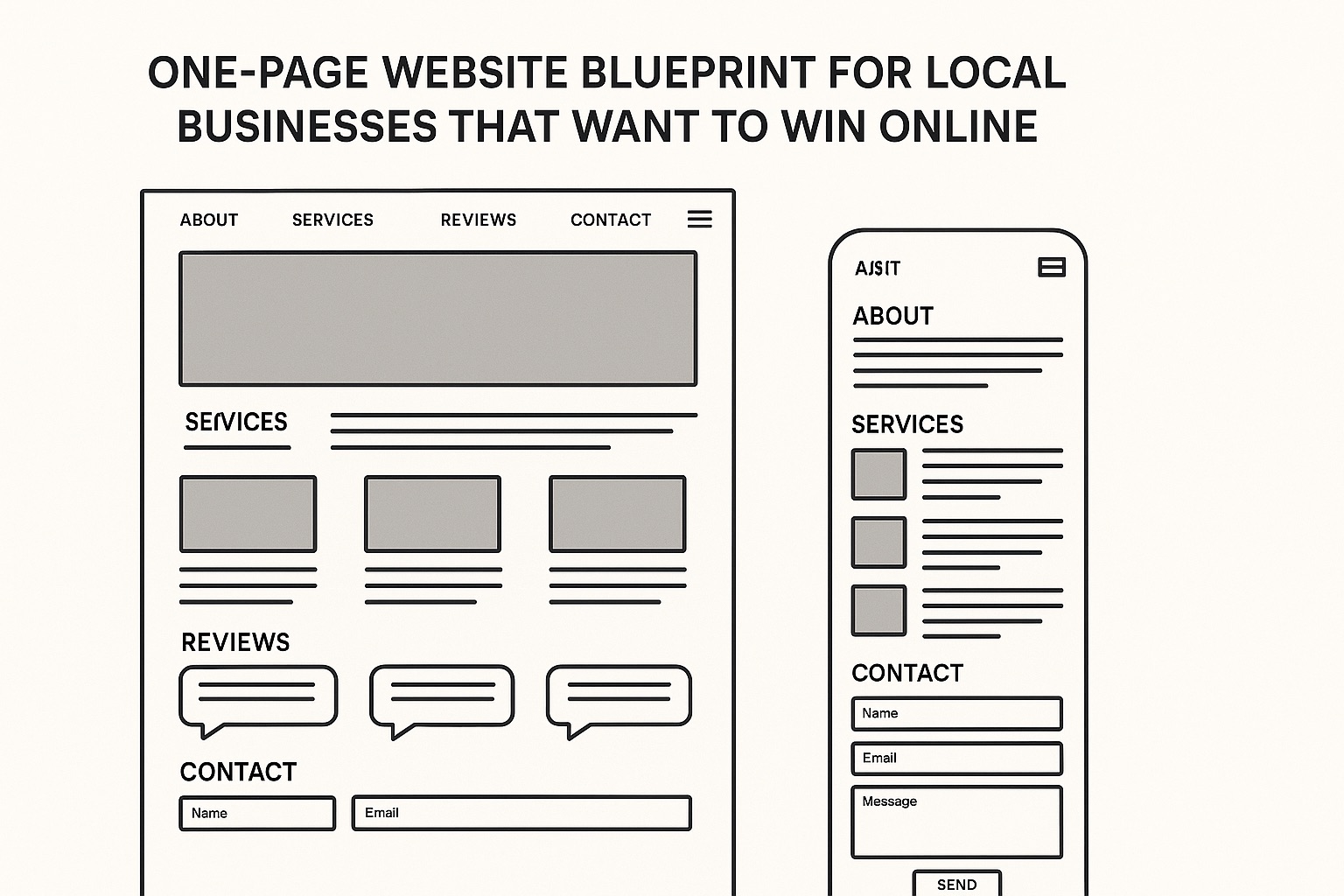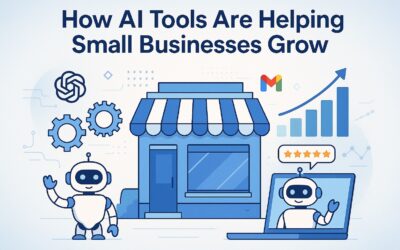What if your local business could capture more leads with fewer web pages than your competitors? While multi-page sites dominate the digital landscape, 68.8% of web traffic now comes from mobile devices – and users crave simplicity. This shift has reshaped how service professionals like roofers, plumbers, and HVAC contractors connect with customers.
Traditional websites often bury critical information under layers of menus. A focused single-page approach cuts through the noise, putting your services, reviews, and contact details where customers actually look. Simple Web Solutions has helped over 8,000 businesses transform their online presence using this strategy, proving that less can truly be more.
Mobile-first design isn’t just trendy – it’s essential. Fast-loading pages keep visitors engaged, while strategic content placement guides them toward conversion. Local customers don’t want to hunt for your phone number or service area. They need clear answers, fast.
Key Takeaways
- Mobile optimization drives 68.8% of web traffic – design matters
- Single-page sites reduce bounce rates through simplified navigation
- Faster load times directly impact lead generation success
- Strategic content placement outperforms complex site structures
- Local service businesses see higher conversions with focused messaging
Table of Contents
Understanding the Value of a One-Page Website
Local service providers face a unique challenge: delivering critical information quickly to mobile-first customers. While multi-page designs work for some industries, service professionals thrive when they cut through digital clutter. A streamlined approach aligns with how modern users interact with businesses online.
Benefits for Small Ventures and Local Pros
Roofers, plumbers, and HVAC contractors often see higher conversion rates with single-page layouts. These designs showcase services, reviews, and contact details in one scrollable flow. Decision fatigue drops when customers don’t navigate menus or hunt for phone numbers.
Mobile users demand speed – 53% abandon sites taking over 3 seconds to load. Simplified structures reduce bounce rates by keeping content focused. Service businesses using this method report 40% faster load times compared to traditional websites.
Simplified User Experience and Conversion Focus
Every design element serves a purpose in guiding visitors toward action. Strategic placement builds trust through testimonials before revealing call-to-action buttons. This logical sequence mirrors how customers evaluate local services offline.
HubSpot research shows businesses with 30+ landing pages generate 12x more leads. Yet local pros achieve better results optimizing one powerful page. Concentrated SEO efforts and clear messaging often outperform scattered multi-page strategies.
“A focused digital presence converts 22% better for service businesses than complex sites,” notes Simple Web Solutions’ case studies.
By eliminating unnecessary steps, contractors create frictionless paths from first click to phone call. This approach lets owners refine their core message while saving time on content updates.
Optimizing Your One-Page Website for Local Success
Local service businesses compete in digital battlegrounds where milliseconds impact rankings. Simple Web Solutions crafts strategies that transform compact sites into lead-generating powerhouses through precision SEO and technical finesse.
Laser-Focused Keyword Implementation
Tools like Ahrefs reveal what neighbors actually search: “24-hour electrician” beats generic terms. Successful pages weave location-specific phrases into headers and meta descriptions organically. Density matters less than strategic placement where both users and algorithms notice.
Structured Data That Speaks to Bots
Schema markup acts as a translator for search engines. Adding LocalBusiness schema clarifies service areas and operating hours. This data feeds directly into Google’s map packs and knowledge panels.
“Pages with schema markup appear in 36% more local searches,” explains a Simple Web Solutions case study.
Speed remains non-negotiable. Compressed hero images shave seconds off load times while maintaining visual impact. Lazy loading ensures below-the-fold content doesn’t delay initial interactions.
- Mobile-first indexing demands responsive menus
- Alt text converts images into SEO assets
- Minified CSS files prevent render-blocking
These technical elements work in concert to create pages that satisfy both impatient customers and crawling algorithms. The result? Higher rankings without sacrificing user experience.
Engaging Design and a Mobile-First Approach
Three-quarters of global consumers judge a company’s credibility based on its digital appearance. For service professionals, this reality demands designs that adapt flawlessly to smartphones while retaining desktop polish. Simple Web Solutions prioritizes layouts that shrink and expand intuitively, ensuring your message stays crisp whether viewed on a 6-inch screen or 27-inch monitor.
Responsive Layout and Mobile Optimization
Start by testing your current page on actual mobile devices – not just simulators. Menus should collapse into hamburger icons without hiding critical contact details. Images must resize proportionally, avoiding awkward cropping that distorts your service examples.
Google’s Core Web Vitals now penalize sites with sluggish mobile performance. Compress hero images to under 150KB and use modern formats like WebP. Lazy loading ensures visitors see your phone number before decorative graphics load.
“Mobile-optimized designs convert 34% better for HVAC companies than desktop-first approaches,” reports Simple Web Solutions’ 2024 case study.
Practical Tips for Color Scheme and Typography
Choose colors that mirror your physical branding while meeting accessibility standards. A roofing contractor might pair charcoal gray with safety-orange accents – high contrast for readability, industry-appropriate symbolism.
Font sizing matters more on handheld devices. Use 16px minimum for body text and increase line spacing by 30% compared to desktop layouts. Sans-serif fonts like Arial or Open Sans maintain clarity at smaller scales.
- Test color contrast ratios using WebAIM’s free checker
- Limit typefaces to two complementary families
- Use bold weights sparingly to guide attention
Utilizing Review Automation to Build Credibility
Modern customers check 10+ reviews before contacting a service business. Simple Web Solutions’ tools turn satisfied clients into your best marketing team while maintaining professional standards. Automated systems capture feedback at peak satisfaction moments – right after job completion.
Collecting 5-Star Reviews with Branded Widgets
Custom review widgets blend seamlessly with your single-page design, appearing as natural extensions of your content. Clients click recognizable star ratings to share experiences without navigating away. These tools auto-publish testimonials to Google Business Profile, multiplying your visibility.
Managing Negative Feedback Privately
Smart automation routes critical comments directly to your inbox before they go public. This lets contractors resolve issues while preserving online reputations. Private resolution maintains trust with both unhappy customers and future prospects browsing your page.
Integrated systems update testimonials across platforms simultaneously. A roofing company using these tools saw 47% more review submissions within 3 months. Your digital presence stays fresh without manual updates – crucial for maintaining search rankings.
FAQ
How does a single-page layout improve local search rankings?
Streamlined content and clear calls-to-action make it easier for search engines like Google to prioritize relevance. Combined with localized keywords, schema markup, and fast loading speeds, this structure boosts visibility for nearby customers searching for your services.
Can a one-page design work for service-based businesses with multiple offerings?
Yes. Strategic sections with tabs or anchor links let you showcase specialties without clutter. For example, a plumber might organize services under “Emergency Repairs” and “Installations,” using buttons to highlight top-selling packages.
What mobile-first features are non-negotiable for local clients?
Responsive layouts that adapt to any screen size, click-to-call buttons, and Google Maps integration are essential. Tools like Cloudflare’s image optimization ensure fast load times on cellular networks, reducing bounce rates.
How do branded review widgets build trust with potential customers?
Embedded 5-star ratings from platforms like Google My Business or Facebook create social proof. Automated requests post-service encourage happy clients to share experiences, while negative feedback is redirected to private channels to maintain professionalism.
Why prioritize color contrast and typography in a compact design?
High-contrast colors (like navy and cream) improve readability on smartphones, while clean fonts like Roboto guide visitors toward key actions. This reduces distractions and keeps the focus on conversions like appointment bookings.
Are single-page sites compatible with email marketing tools?
Absolutely. Integrations with Mailchimp or Klaviyo let you embed signup forms for newsletters or promotions. Pair these with lead magnets like free estimates to grow your contact list directly from the page.





0 Comments